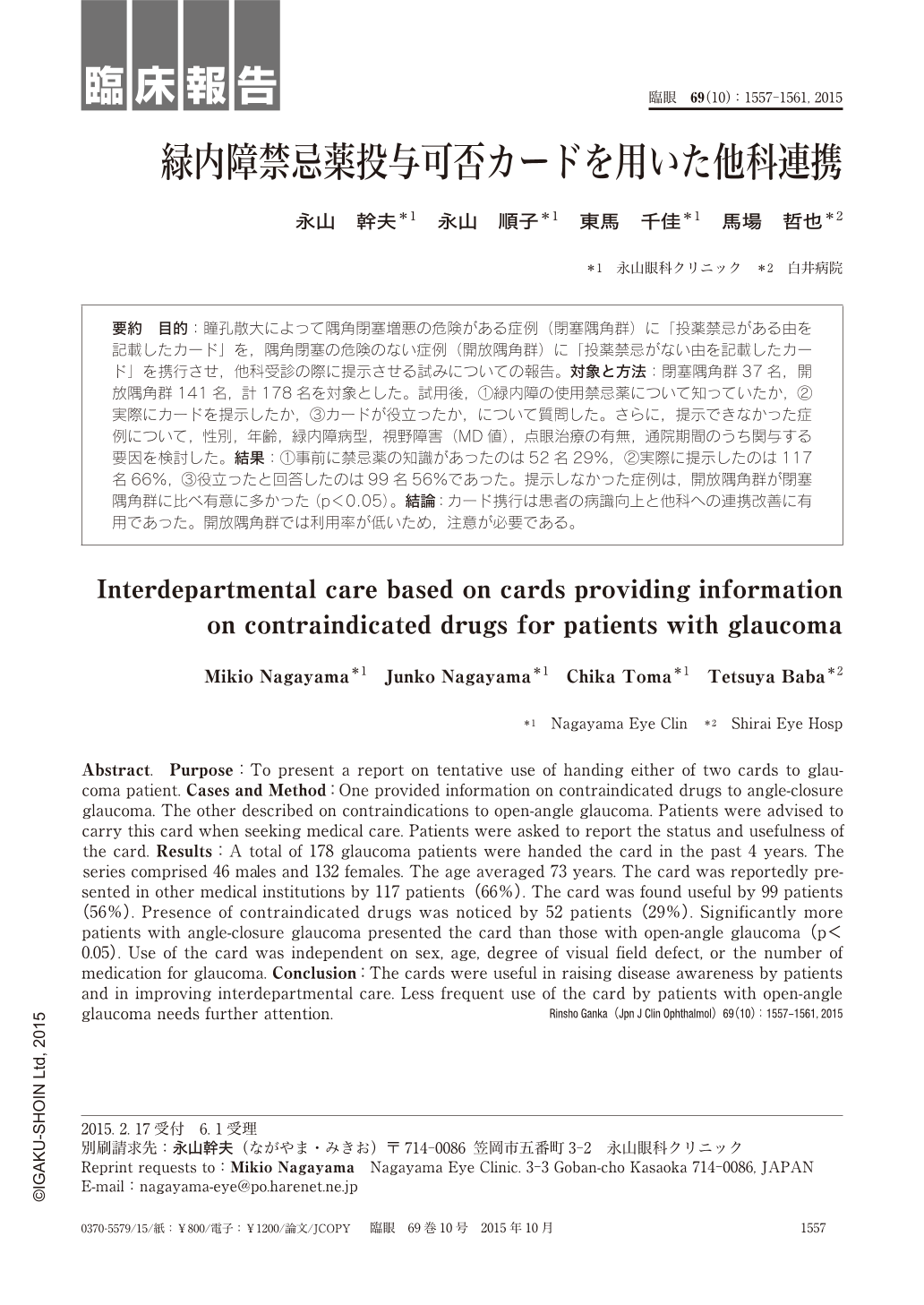Japanese
English
- 有料閲覧
- Abstract 文献概要
- 1ページ目 Look Inside
- 参考文献 Reference
要約 目的:瞳孔散大によって隅角閉塞増悪の危険がある症例(閉塞隅角群)に「投薬禁忌がある由を記載したカード」を,隅角閉塞の危険のない症例(開放隅角群)に「投薬禁忌がない由を記載したカード」を携行させ,他科受診の際に提示させる試みについての報告。対象と方法:閉塞隅角群37名,開放隅角群141名,計178名を対象とした。試用後,①緑内障の使用禁忌薬について知っていたか,②実際にカードを提示したか,③カードが役立ったか,について質問した。さらに,提示できなかった症例について,性別,年齢,緑内障病型,視野障害(MD値),点眼治療の有無,通院期間のうち関与する要因を検討した。結果:①事前に禁忌薬の知識があったのは52名29%,②実際に提示したのは117名66%,③役立ったと回答したのは99名56%であった。提示しなかった症例は,開放隅角群が閉塞隅角群に比べ有意に多かった(p<0.05)。結論:カード携行は患者の病識向上と他科への連携改善に有用であった。開放隅角群では利用率が低いため,注意が必要である。
Abstract. Purpose:To present a report on tentative use of handing either of two cards to glaucoma patient. Cases and Method:One provided information on contraindicated drugs to angle-closure glaucoma. The other described on contraindications to open-angle glaucoma. Patients were advised to carry this card when seeking medical care. Patients were asked to report the status and usefulness of the card. Results:A total of 178 glaucoma patients were handed the card in the past 4 years. The series comprised 46 males and 132 females. The age averaged 73 years. The card was reportedly presented in other medical institutions by 117 patients(66%). The card was found useful by 99 patients(56%). Presence of contraindicated drugs was noticed by 52 patients(29%). Significantly more patients with angle-closure glaucoma presented the card than those with open-angle glaucoma(p<0.05). Use of the card was independent on sex, age, degree of visual field defect, or the number of medication for glaucoma. Conclusion:The cards were useful in raising disease awareness by patients and in improving interdepartmental care. Less frequent use of the card by patients with open-angle glaucoma needs further attention.

Copyright © 2015, Igaku-Shoin Ltd. All rights reserved.


